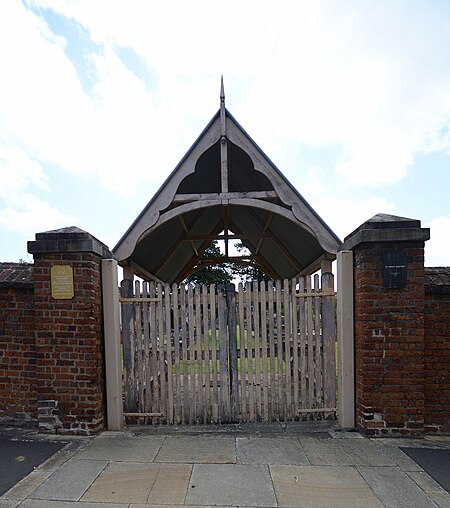St John's Cemetery, Parramatta

St John's Cemetery, Parramatta, also known as St John's Anglican Cemetery, Saint John's Cemetery, and First Fleet Cemetery, is a heritage-listed cemetery at 1 O'Connell Street, Parramatta, City of Parramatta, New South Wales, Australia.The cemetery is highly significant as it was established in 1790 as a general burial ground for all religious denominations making it the oldest surviving European cemetery in Australia. It is also significant for being the final resting place of many notables, including over 50 First Fleet graves and well known early European settlers, such as the Reverend Samuel Marsden, his wife Elizabeth, land holder D'Arcy Wentworth and family, land holders and farmers the Blaxland family, Charles Fraser, soldier and colonial botanist, who was appointed the first superintendent of the Sydney Botanic Garden by Governor Macquarie in 1816, and colonial bridge builder David Lennox, to name just a few.It was only when cemeteries dedicated to specific religious denominations were progressively established in Parramatta in the mid-nineteenth century that St John's finally became an Anglican burial ground specifically. The historic cemetery was added to the New South Wales State Heritage Register on 2 April 1999.
Excerpt from the Wikipedia article St John's Cemetery, Parramatta (License: CC BY-SA 3.0, Authors, Images).St John's Cemetery, Parramatta
Argyle Street, Sydney
Geographical coordinates (GPS) Address Phone number Website Nearby Places Show on map
Geographical coordinates (GPS)
| Latitude | Longitude |
|---|---|
| N -33.8169 ° | E 150.9984 ° |
Address
United Voice NSW - Liquor & Hospitality Division
Argyle Street 19
2150 Sydney
New South Wales, Australia
Open on Google Maps









